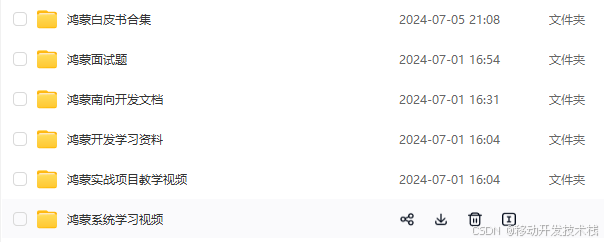// 在使用Wear Engine服务前,请导入WearEngine与相关模块
import { wearEngine } from '@kit.WearEngine';
import { BusinessError } from '@kit.BasicServicesKit';查询穿戴设备是否支持某种WearEngine能力集
注意
该接口的调用需要在开发者联盟申请设备基础信息权限。
通过[Device]对象中的方法[isWearEngineCapabilitySupported]查询穿戴设备是否支持某种WearEngine能力集。
-
应用调用[wearEngine]中的[getDeviceClient]方法,获取[DeviceClient]对象。
let deviceClient: wearEngine.DeviceClient = wearEngine.getDeviceClient(getContext(this)); -
调用[getConnectedDevices]方法,获取已连接的设备列表。
let deviceList: wearEngine.Device[] = [];
deviceClient.getConnectedDevices().then(devices => {
// 存储已连接的设备列表
deviceList = devices;
console.info(Succeeded in getting deviceList, devices number is ${deviceList.length});
}).catch((error: BusinessError) => {
// 处理调用失败时捕获到的异常
console.error(Failed to get deviceList. Code is ${error.code}, message is ${error.message});
}) -
从设备列表中选取需要操作的设备。
-
调用[Device]对象中的[isWearEngineCapabilitySupported]接口可查询该设备是否支持传入的WearEngine能力(true:支持;false:不支持),以P2P能力为例。
if (deviceList.length > 0) {
// 步骤3 从得到的设备列表中选取目标设备,并定义为device(假设数组中存在已连接设备且第一位即为目标设备)
let targetDevice: wearEngine.Device = deviceList[0];// 步骤4 调用设备的方法查询是否支持某种WearEngine能力(以P2P为例)
targetDevice.isWearEngineCapabilitySupported(wearEngine.WearEngineCapability.P2P_COMMUNICATION).then((isSupportP2P) => {
console.info(Succeeded in checking p2p capability, result is ${isSupportP2P});
}).catch((error: BusinessError) => {
console.error(Failed to check p2p capability. Code is ${error.code}, message is ${error.message});
})
}
查询穿戴设备是否支持某种Device能力集
注意
该接口的调用需要在开发者联盟申请设备基础信息权限。
通过[Device]对象中的方法[isDeviceCapabilitySupported]查询穿戴设备是否支持某种Device能力集。
-
应用调用[wearEngine]中的[getDeviceClient]方法,获取[DeviceClient]对象。
let deviceClient: wearEngine.DeviceClient = wearEngine.getDeviceClient(getContext(this)); -
调用[getConnectedDevices]方法,获取已连接的设备列表。
let deviceList: wearEngine.Device[] = [];
deviceClient.getConnectedDevices().then(devices => {
// 存储已连接的设备列表
deviceList = devices;
console.info(Succeeded in getting deviceList, devices number is ${deviceList.length});
}).catch((error: BusinessError) => {
// 处理调用失败时捕获到的异常
console.error(Failed to get deviceList. Code is ${error.code}, message is ${error.message});
}) -
从设备列表中选取需要操作的设备。
-
调用[Device]对象中的[isDeviceCapabilitySupported]接口可查询该设备是否支持传入的Device能力(true:支持;false:不支持)。
if (deviceList.length > 0) {
// 步骤3 从得到的设备列表中选取目标设备,并定义为device(假设数组中存在已连接设备且第一位即为目标设备)
let targetDevice: wearEngine.Device = deviceList[0];// 步骤4 调用设备的方法查询是否支持某种Device能力(以是否支持应用安装为例)
targetDevice.isDeviceCapabilitySupported(wearEngine.DeviceCapability.APP_INSTALLATION).then((isSupportInstall) => {
console.info(Succeeded in checking install app capability, result is ${isSupportInstall});
}).catch((error: BusinessError) => {
console.error(Failed to check install app capability. Code is ${error.code}, message is ${error.message});
})
}
查询设备SN
注意
该接口的调用需要在开发者联盟申请设备标识符权限(受限开放)并获得用户授权
通过[Device]对象中的方法[getSerialNumber]查询穿戴设备的SN。
-
应用调用[wearEngine]中的[getDeviceClient]方法,获取[DeviceClient]对象。
let deviceClient: wearEngine.DeviceClient = wearEngine.getDeviceClient(getContext(this)); -
调用[getConnectedDevices]方法,获取已连接的设备列表。
let deviceList: wearEngine.Device[] = [];
deviceClient.getConnectedDevices().then(devices => {
// 存储已连接的设备列表
deviceList = devices;
console.info(Succeeded in getting deviceList, devices number is ${deviceList.length});
}).catch((error: BusinessError) => {
// 处理调用失败时捕获到的异常
console.error(Failed to get deviceList. Code is ${error.code}, message is ${error.message});
}) -
从设备列表中选取需要操作的设备。
-
调用[Device]对象中的方法[getSerialNumber]查询穿戴设备的SN。
if (deviceList.length > 0) {
// 步骤3 从得到的设备列表中选取目标设备,并定义为device(假设数组中存在已连接设备且第一位即为目标设备)
let targetDevice: wearEngine.Device = deviceList[0];// 步骤4 调用设备的方法查询SN
targetDevice.getSerialNumber().then((sn) => {
console.info(Succeeded in getting device SN, result is ${sn});
}).catch((error: BusinessError) => {
console.error(Failed to get device SN. Code is ${error.code}, message is ${error.message});
})
}
最后呢
很多开发朋友不知道需要学习那些鸿蒙技术?鸿蒙开发岗位需要掌握那些核心技术点?为此鸿蒙的开发学习必须要系统性的进行。
而网上有关鸿蒙的开发资料非常的少,假如你想学好鸿蒙的应用开发与系统底层开发。你可以参考这份资料,少走很多弯路,节省没必要的麻烦。由两位前阿里高级研发工程师联合打造的《鸿蒙NEXT星河版OpenHarmony开发文档 》里面内容包含了(ArkTS、ArkUI开发组件、Stage模型、多端部署、分布式应用开发、音频、视频、WebGL、OpenHarmony多媒体技术、Napi组件、OpenHarmony内核、Harmony南向开发、鸿蒙项目实战等等)鸿蒙(Harmony NEXT)技术知识点
如果你是一名Android、Java、前端等等开发人员,想要转入鸿蒙方向发展。可以直接领取这份资料辅助你的学习。下面是鸿蒙开发的学习路线图。

针对鸿蒙成长路线打造的鸿蒙学习文档。话不多说,我们直接看详细鸿蒙(OpenHarmony )手册(共计1236页)与鸿蒙(OpenHarmony )开发入门视频,帮助大家在技术的道路上更进一步。
- 《鸿蒙 (OpenHarmony)开发学习视频》
- 《鸿蒙生态应用开发V2.0白皮书》
- 《鸿蒙 (OpenHarmony)开发基础到实战手册》
- OpenHarmony北向、南向开发环境搭建
- 《鸿蒙开发基础》
- 《鸿蒙开发进阶》
- 《鸿蒙开发实战》

总结
鸿蒙---作为国家主力推送的国产操作系统。部分的高校已经取消了安卓课程,从而开设鸿蒙课程;企业纷纷跟进启动了鸿蒙研发。
并且鸿蒙是完全具备无与伦比的机遇和潜力的;预计到年底将有 5,000 款的应用完成原生鸿蒙开发,未来将会支持 50 万款的应用。那么这么多的应用需要开发,也就意味着需要有更多的鸿蒙人才。鸿蒙开发工程师也将会迎来爆发式的增长,学习鸿蒙势在必行! 自↓↓↓拿
